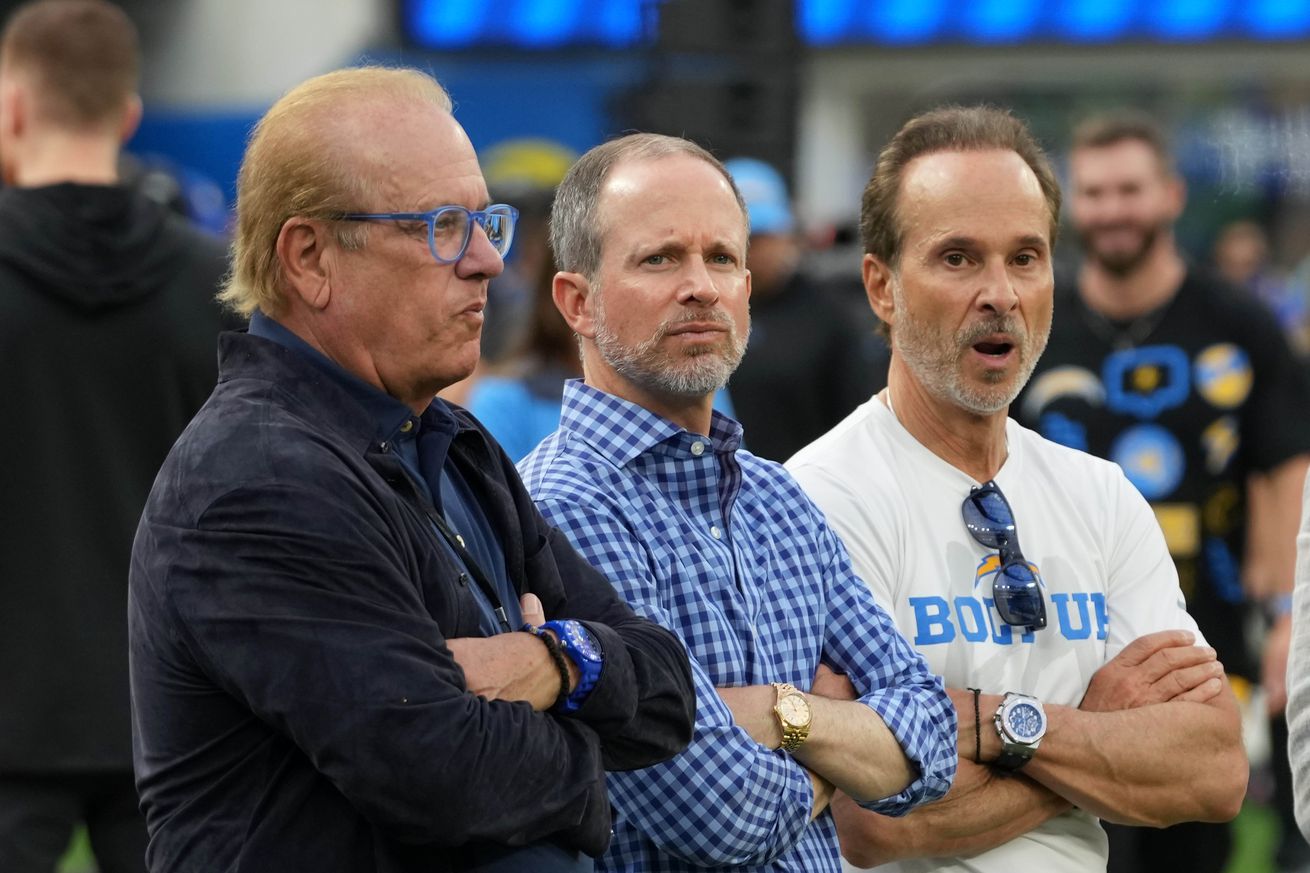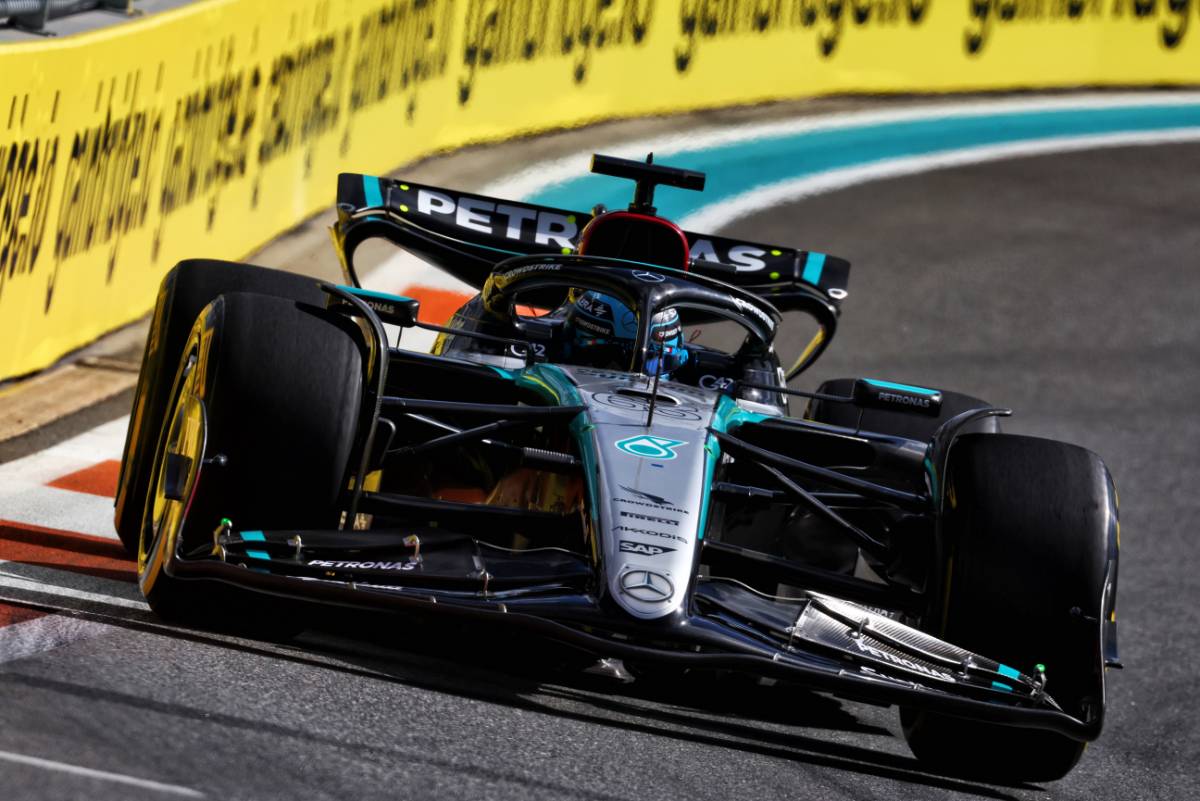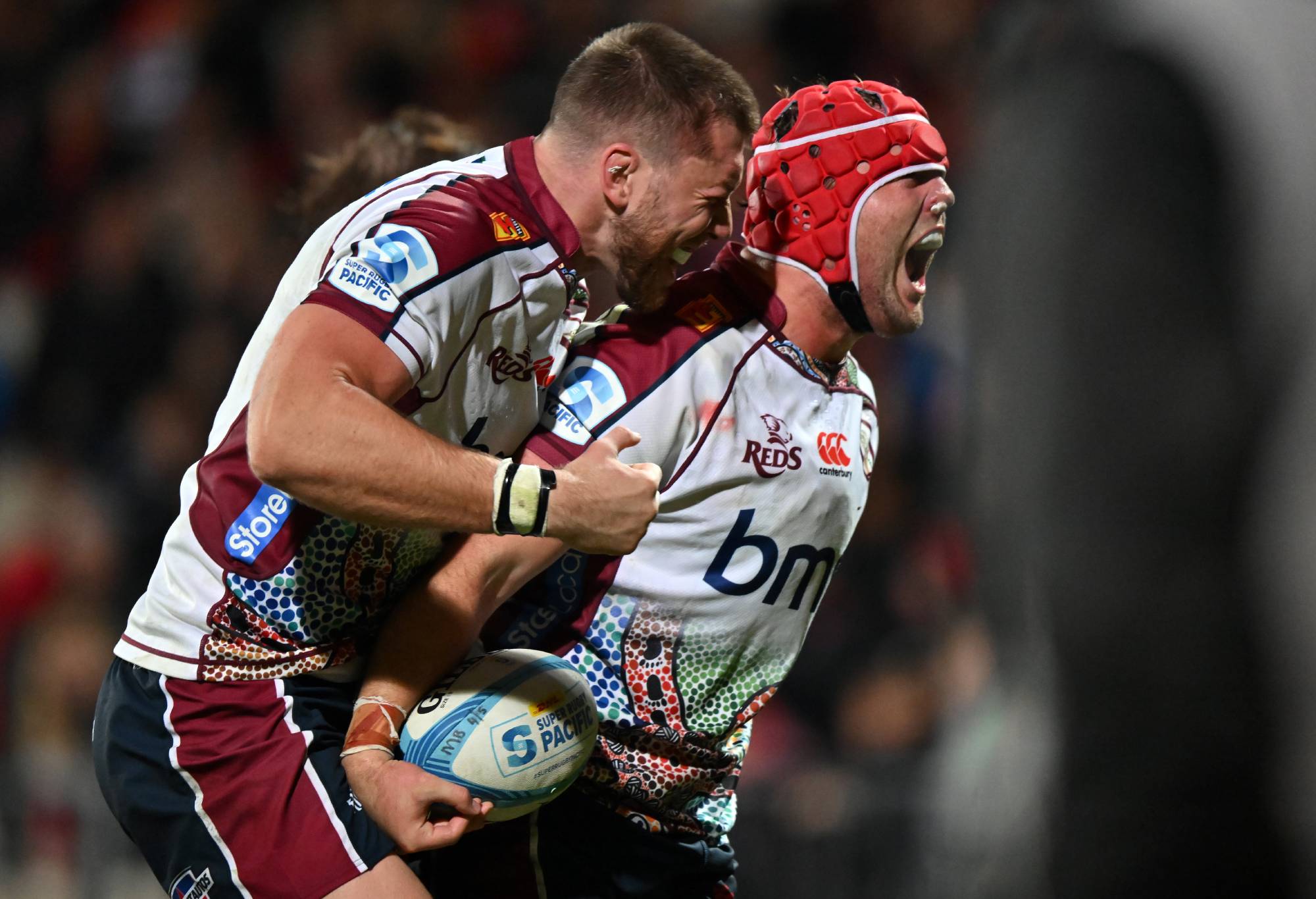
The Chargers have gone “All-In,” but it’s not too late to back down… yet.
When I tore my ACL and Meniscus in 2016, the worst part of the injury wasn’t the initial pain, recovering from surgery, or eight months of physical therapy. The unbearable part of the experience was the month-long wait between diagnosis and surgery.
The excruciating post-op pain, physically and mentally exhausting physical therapy, and re-tear fear with each setback all paled in comparison to the depression of waiting for the surgery date to come. I felt broken and useless, like I was stuck in a month-long layover at an airport. Surgery sounds scary, but it has always resonated as Day One on the recovery calendar. From then on, I can push forward knowing each day I’m getting a little healthier, a little stronger, and a little closer to my goal.
Right now, I look at the 2023 Los Angeles Chargers and their 2024 budget crisis, and I see a team that needs surgery can’t afford to lounge in the waiting room until the offseason. If they choose, they can start healing today.
Why the urgency?
When Tom Telesco restructured four of the Chargers’ largest contracts before the start of the 2023 NFL offseason, he pushed all his chips to the center of the table.
The 2022 season had been marketed as the Bolts’ “All-In” year after Telesco uncharacteristically traded for former All-Pro edge rusher Khalil Mack, but injuries derailed the hopes of a deep playoff run for the talented roster. The “All-In” year came with consequence and for the first time in Tom’s career, he was entering the offseason with a negative cap space.
I wrote this article as a FanPost in late February, covering the various ways the Chargers could get cap-compliant before the start of the new league year. I estimated that the Chargers would need to clear at least $28,400,000 to sign their draft selections, fill their roster with minimum salaries players, and have a reasonable budget for practice squad players and in-season moves (note, if you click on the spreadsheet in that article, it’s currently outdated).
Telesco’s decision to restructure Khalil Mack, Mike Williams, Joey Bosa, and Keenan Allen seemed like a desperation play if you were studying the future cap health of the Chargers. Instead of utilizing cap-clearing tools that could have added surplus-value to the roster, such as trading Joey Bosa for draft capital as I suggested in the article, Tom packaged over $40 million in dead cap and sent approximately $33 million to 2024’s budget and $7 million to 2025’s.
Here is an updated copy of the Chargers’ 2024 cap health, using the figures provided by OverTheCap and some adjustments that our own BFTB community member Tau837 referenced in his amazing breakdown of his projections in this FanPost.
I currently have an elevated roll-over number, as OTC current projects $9,184,117 in 2023 cap space for the Bolts, most of which I’m hoping rolls into 2024. However, the $8,000,000 figure I provided is an absolute best-case scenario and overly-optimistic.
By these projections the Chargers have to clear $55,000,000 from their books at the bare minimum.
/cdn.vox-cdn.com/uploads/chorus_asset/file/25035575/2024_Cap_health.png)
If that doesn’t scare you, head over to OverTheCap and take a gander at their Restructure Potential page. The Chargers are projected to have the 2nd-highest cap deficit, and of the nine teams projected to be over the cap in 2024, they are the only team that can’t fix their budget with simple restructures. They have the option to theoretically add “void” years and commit to max restructures, which would destroy the team’s future financial health given the rapidly rising cap hit for Justin Herbert already on the books.
OverTheCap has the Chargers with the second-highest cap deficit heading into 2024. Even more fun – they are the only team that can’t get cap-compliant with simple restructures. @Jason_OTC pic.twitter.com/EPKuyHuy2J
— Kyle DeDiminicantanio (@TheKyleDe) October 24, 2023
The four restructures of the 2023 offseason were incredibly risky and controversial at the time they were made, a figurative second-mortgage to let the “All-In” mantra ride one more time. It put the Chargers in a true “Championship or Bust” position, but an aggravated locker room and the team looking nothing like a contender, it would be flat out irresponsible to not unwind the 2024 cap situation while trading is still an option.
Unwinding “All-In” to live another day
For the Chargers to rectify their 2024 cap situation an rebuild as quickly as possible, they’d be wise to consider two types of moves:
- Trade away contract-year players that free up 2023 cap space, which will roll-over to 2024
- Trade away 2024 cut-candidates based on their cap savings and what the draft capital compensation could be
Let’s tackle both of these scenarios, and see the net effect if six key targets were moved at the deadline.
Contract-year trade candidates
Michael Davis
Davis has wild wildly polarizing years. Some seasons he seems capable of being a shutdown corner, and others he’s regularly getting torched. He hasn’t looked his strongest this season, but he’s still likely out of our price range to sign next season.
2023 Salary Earned: $2,635,295 (base salary and per-game roster bonuses)
2023 Potential Cap Savings: $3,323,000 (rookie-minimum salary replacement)
Desired Compensation: 7th
Opportunity Opened: Deane Leonard had pundits and fans raving over his rookie training camp performance, but floundered in his first preseason. In 2023, he showcased that potential in camp again, and carried it into the preseason. Could Leonard surprise with an expanded role?
Austin Ekeler
If you’re surprised by this inclusion, you may have missed the Twitter/X video that dropped of Ekeler after the Chiefs game.
This is painful.
“Is there faith still in what Brandon Staley is-“
Ek – “We have no choice right?”
Deadpan stare for 2 seconds.
“Yeah, yeah we have faith. Yeah, this is our team, this is who we’re riding with. It’s all the way to the end. You know – good bad or ugly.” https://t.co/9qRsExYG6E
— Kyle DeDiminicantanio (@TheKyleDe) October 24, 2023
Ekeler was interviewed about this clip, and still sounded pretty disgruntled.
Austin is a competitor. If the Chargers don’t plan on keeping him in their plans beyond 2023, give him a chance to complete! A team like the 49ers would be a perfect landing spot for Ek, as McCaffrey is already banged up and Austin is the closest thing to Christian the league has to offer. He would be a great insurance play for a team that relies on its offensive playmakers to support their second year quarterback.
2023 Salary Earned: $2,573,529 (base salary)
2023 Potential Cap Savings: $3,235,295 (rookie-minimum salary replacement)
Desired Compensation: 3rd or 4th – barring ankle status
Opportunity Opened: This is a less-enticing opportunity spot, because we’ve already seen Joshua Kelly flounder, and Isaiah Spiller still hasn’t been able to crack into a respectable snap count. Nevertheless, the team could continue to see what they have in Spiller or Elijah Dotson, and increase the gadget-usage of Derius Davis.
Austin Johnson
Johnson is having a rough, rough year. He’s played in all six games, but has only logged six solo tackles, six assists, one pressure, and two stops. PFF has him logged with a grade of 31.9. If there’s an opportunity for a pick-swap with a competitor that needs depth; even though we’d be offering the higher pick, the cap savings is worth it.
2023 Salary Earned: $2,779,412 (base salary)
2023 Potential Cap Savings: $3,529,412 (rookie-minimum salary replacement)
Desired Compensation: 7th
Opportunity Opened: Otito Ogbonnia is back at practice, Scott Matlock is a rookie we really want to see more of, and Nick Williams is neck-and-neck with Sebastian Joseph-Day as our highest-rated defensive lineman. Give Matlock and Williams the extra snaps until Ogbonnia is ramped-up to take on a decent workload, and weigh out the rotation from there.
2024 cut candidates on the trade block
Joey Bosa
I was at Notorious Burgers in Carlsbad when I saw Joey play for the first time, and it was a revelation. He brought energy and dominance to the defensive pass rush I hadn’t seen since the Shawn Merriman days. But Joey hasn’t been the same player the last couple seasons, and doesn’t justify the cap hit we have attached to him.
The most obvious trade partner would be the 49ers, as they currently have Clelin Ferrel on the opposite edge of Nick Bosa.
2023 Potential Cap Savings: Borderline Irrelevant, due to his 2023 restructure
2024 Potential Cap Savings: $13,593,332, with $32,971,668 in 2025 savings
Desired Compensation: 3rd or 4th
Opportunity Opened: It’s time to just give Tuli Tuipulotu as many snaps as possible. The Chargers have practice-squad EDGEs they can bring up to spell Tuli as needed, Tuli and Chris Rumph would both be given expanded roles.
Khalil Mack
Khalil Mack was coming off season-ending surgery when the Chargers traded a 2nd and a future 6th for his services, stifling his market for the Bears. Since then, Mack has proven he can be a game-wrecking force for a defense. Mack already has 28 pressures, eight sacks, and 16 stops in six games this season. In his final season in Chicago, he played seven games and posted 22 pressures, six sacks, and 13 stops.
Since a trade for Mack could secure him for a 2023 postseason run and offer his next team a reduced cap hit of $23,250,000 in 2024, Mack should be the most valuable trade asset the Chargers have to offer, likely mirroring the return Von Miller fetched for the Broncos in 2021 when the Rams sent a 2nd and a 3rd at the deadline for his services. At that point, Miller had five sacks, 28 pressures, and 11 stops for the Broncos.
2023 Potential Cap Savings: Borderline Irrelevant, due to his 2023 restructure
2024 Potential Cap Savings: $22,455,000
Desired Compensation: 2nd and a 3rd
Opportunity Opened: See above; Tuli would be our featured EDGE, and Chris Rumph would be elevated to a starter in his third year. Though Rumph taking that kind of snap load isn’t ideal, his performance will dictate how heavily EDGE is prioritized in the draft.
Sebastian Joseph-Day
Bash is having a stronger 2023 than his previous season, already matching his two sacks in 2022 in the first six games, and is on pace to double his 18 pressures. However, with a decent salary in 2023 and a $7,500,000 savings in 2024, he’s a player that could provide significant cap relief next year.
2023 Potential Cap Savings: $3,382,353
2024 Potential Cap Savings: $6,705,000
Desired Compensation: 6th or 7th
Opportunity Opened: As with Austin Johnson, this would give Otito Ogbonnia a major role moving forward, and Scott Matlock would be heavy in the rotation.
What if ALL of these trades were made?
Not that I’m openly advocating for all six of these players to be traded, but simulating these moves shows just how difficult it will be for the Chargers to get cap compliant in 2024.
/cdn.vox-cdn.com/uploads/chorus_asset/file/25035471/Summary_of_six_trades.jpg)
By adding almost $14,000,000 into the 2023 budget, and freeing up nearly $43,000,000 in 2024’s cap, the Chargers just barely squeeze into a workable budget for 2024.
/cdn.vox-cdn.com/uploads/chorus_asset/file/25035613/2024_Cap_Health_AFTER_trades.png)
Past Examples of Teams that have sold
“Selling” at the trade deadline is not a common football practice, as the NFL strategically sets the deadline much earlier than leagues like the NFL, NBA, and NHL to discourage teams from offloading talent and when they’ve been eliminated from playoff contention. However, it doesn’t make the strategy any less beneficial for a team with this kind of cap crisis.
Teams often offload a key contributor when the playoffs seem out of reach, especially if the player was in a contract year. Von Miller’s 2021 trade to the Rams helped secure the Broncos some Day Two picks for a player leaving in the offseason. The Panthers dealt Christian McCaffrey and Robbie Anderson at the deadline in 2022, and waived Baker Mayfield who was subsequently claimed by the Rams. The Falcons were decent sellers in 2022 as well, shipping away Dean Marlowe to the Bills, Deion Jones to the Browns, and Calvin Ridley to the Jaguars.
However, best example of selling comes from the 2022 Bears, who began by trading Khalil Mack to the Chargers. Although his dead cap accelerated to 2022’s budget sheet, only saving $6.15 million in the first year, the savings ballooned to $28.5 million in 2023 and $23.25 million in 2025. They also added a 2nd and a future 6th to their draft war-chest.
They continued selling at the deadline, sending Roquan Smith to the Ravens for a 2023 2nd and a 5th rounder, and trading Robert Quinn to the Eagles for a 2023 4th. The Bears took on most of the 2022 salaries for both of these players, but trading away Quinn saved them $18.2 million in 2023 cap.
In all, the Bears cleared $46,700,000 in 2023’s cap by trading these three players, and added two 2nd’s, a 4th, a 5th, and a 6th to help transition their roster. The Bears aren’t fortunate enough to have a franchise quarterback like Justin Herbert to keep them afloat during their rebuild, but they have plenty of flexibility in the next offseason to pursue a new quarterback and rebuild their roster with their projected $110 million in cap space.
What does this would mean for the future of the Chargers
Selling now may sound about as enticing as a major surgery, but it gives the Chargers its best chance to heal from this devastating cap situation. It would isolate the pain in a season that’s already lost, and should the Spanos family recognize that Tom Telesco is not the man to facilitate a rebuild, the next general manager is saved from the bad optics of cutting fan-favorite veterans as his first moves with the team.
What do you think, Bolts From the Blue? Should the Chargers consider trading off some of our contract-year and potential 2024 cut candidates now, rather than waiting to say goodbye in the offseason?
















You must be logged in to post a comment Login